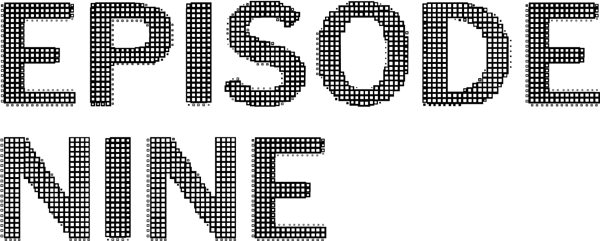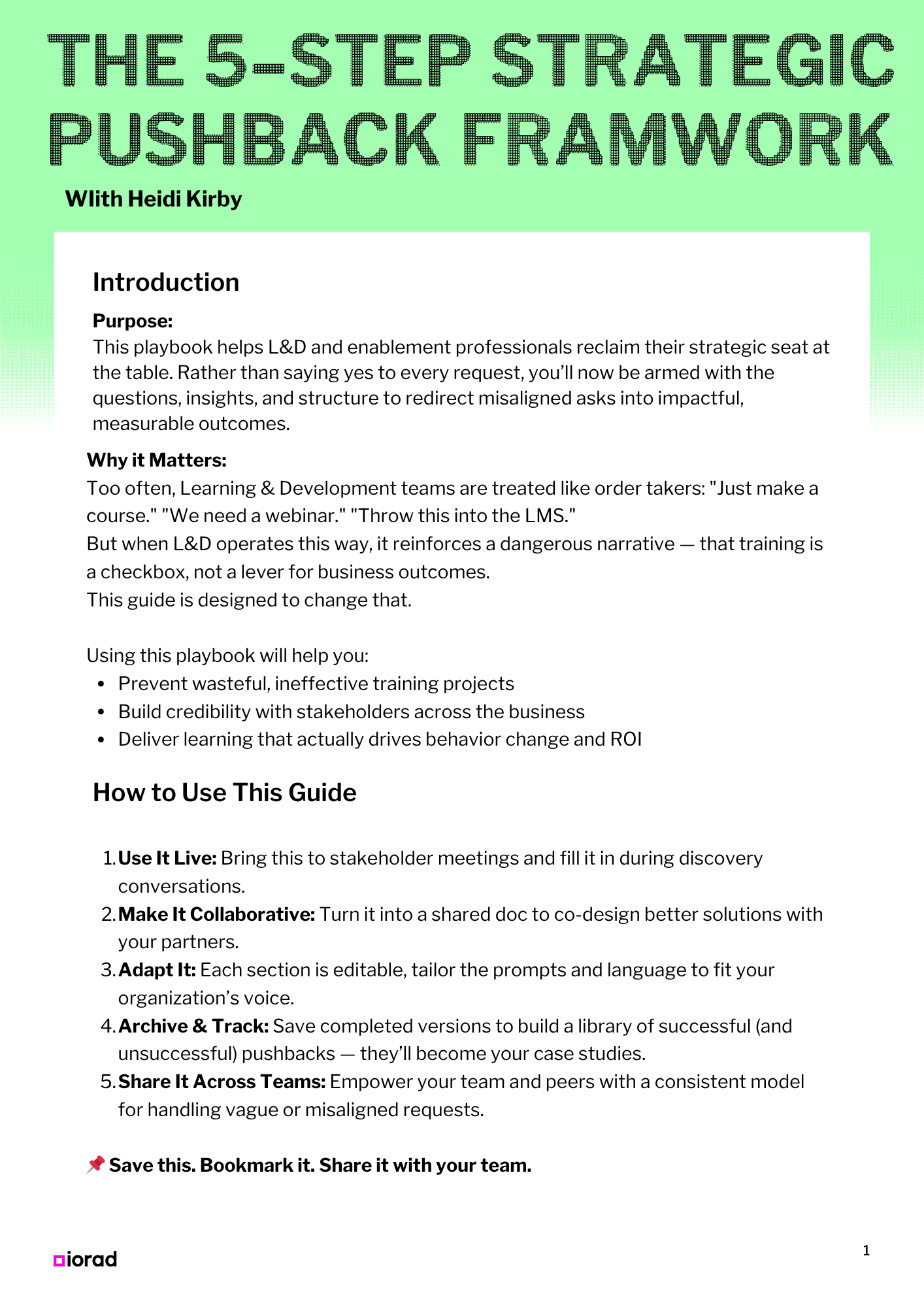
Learn from Dr. Heidi Kirby, as she shares actionable frameworks for transforming learning teams from order-takers to strategic business partners.
Meet our Guest
Dr. Heidi Kirby is the founder of Useful Stuff, a consultancy that helps organizations build impactful learning solutions and supports L&D professionals and ed tech founders through resources, including the global Useful L&D Community and the BLOC Podcast.
With a PhD in Instructional Design and Technology, Heidi has extensive experience assessing needs, creating and developing learning programs, building and growing teams of L&D professionals, and evaluating solutions based on data companies and clients actually care about. Her work is driven by a focus on authenticity, simplicity, inclusivity, and measurable impact.
How to Say "No" and Still Be Trusted in L&D.
Background context: Heidi Kirby didn’t follow the traditional path into L&D. She was a college English professor, then a PhD student in instructional design. But it was her early project at NASA, a small needs assessment for a once-a-year event that turned into a national curriculum revamp across all 10 NASA centers.
That jump happened because Heidi didn’t wait for permission. She started asking better questions. And when people noticed, they gave her more responsibility. Today, she teaches others to do the same.
🎤 "You can’t wait to be handed strategic work. You have to start doing it before you’re invited."— Heidi Kirby
Key Insight #1: Reframe the Ask
L&D pros are often given a solution before anyone defines the problem: "We need a 30-minute e-learning."
Heidi’s approach? Push back — not with a "no," but with a better idea. She once challenged a request for hiring training that didn’t make sense. The stakeholders wanted a course, but the training was only needed once per year. Instead of building the e-learning, she suggested a searchable knowledge base and walked them through an example on the spot.
🎤 "They didn't even know what a knowledge base was. I pulled one up live, and just said, Like this. Step-by-step, self-serve. This is what will actually help them in September when they’re hiring — not a course they take in May."— Heidi Kirby
The result: Stakeholders were sold. Heidi saved the team time, avoided wasted development, and delivered a solution that stuck.

Key Insight #2: Use the Data Hiding in Plain Sight
When asked how to prove the impact of L&D, Heidi doesn’t start with dashboards. She starts with what’s already there:
- Exit interviews
- IT Tickets
- Glassdoor Reviews
- Help Desk Volume
- Manager Feedback
"One stakeholder told me they didn’t have data. I asked, Then how do you know your managers are bad? And they said, Well, people mention it in exit interviews, and our engagement score for managers is low, and Glassdoor reviews mention it a lot. Perfect. That’s your data."— Heidi Kirby
Heidi calls this triangulation. It doesn’t have to be perfect — it has to be persuasive.

Key Insight #3: Completion is a Vanity Metric
Heidi doesn’t care if people finish the course. She wants to know if they solved their problem. That’s why she borrowed the video analytics tool from her marketing team instead of relying on LMS completions. This let her team measure:
- Where learners dropped off
- Where they rewatched content
- Which videos were most effective
"If they don’t need the whole thing, I want them to grab what they need and go. They shouldn’t have to complete anything to be successful."— Heidi Kirby
She also swears by the 80/20 rule:*"Just teach the 20% of the system people will use 80% of the time. The rest belongs in your knowledge base."

Free Adoption Template: The 5-Step Strategic Pushback Framework
The Problem: Stakeholders request the wrong format or training type before clearly identifying the business need.
The Solution: Use this 5-part pushback model to redirect misaligned training requests into solutions that actually work.
- Clarify the request—Ask what they're trying to solve.
- Diagnose the root—Look for behavioral data or performance gaps.
- Show a better option—Don't just explain something, prototype or demo it.
- Tie to business value—Focus on efficiency, cost savings, time to competency.
- Invite collaborators—Build it together.
Why this works: 🎤 "You protect your seat at the table when you stop saying yes to everything. Strategic L&D starts with better conversations."— Heidi Kirby

The 5 Step Strategic Pushback Framework
Reclaim your strategic seat at the table. Rather than saying yes to every request, you’ll now be armed with the questions, insights, and structure to redirect misaligned asks into impactful, measurable outcomes.
Download